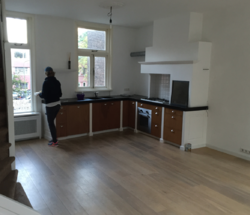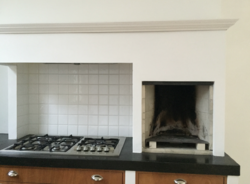Hi all,
I am new to this forum, great info sofar!
For the sake of nostalgia, I am building a traditional fireplace (not a Rumford model). Rough dimensions: front opening of 25in width and 29in height. Flue liner from the top of the smoke chamber 27ft with an 8in inside diameter.
It is safe to say that the air consumption will be around 12,000 cu/ft per hour.
The living room (5,000 cu ft) is isolated quite well and depends on floor heating. I’d like to avoid sucking all the warm air out, especially as floor heating will take a considerable time to compensate.
(A glass door panel is no option, open fire is the objective).
I am considering an external (18 sq in) air supply (with valve regulator) from the crawl space. The crawl space is ventilated naturally by ventilation holes.
Your opinions are highly appreciated on:
1. the extend to which an external air supply will partly overcome exhausting all the warm living room air. Will it make a difference?
2. the location of the fire grate (air supply): located near the back-wall under the fire -or- located more towards the front opening? (pls, see attached drawing)
Thank you in advance!
Aristo
I am new to this forum, great info sofar!
For the sake of nostalgia, I am building a traditional fireplace (not a Rumford model). Rough dimensions: front opening of 25in width and 29in height. Flue liner from the top of the smoke chamber 27ft with an 8in inside diameter.
It is safe to say that the air consumption will be around 12,000 cu/ft per hour.
The living room (5,000 cu ft) is isolated quite well and depends on floor heating. I’d like to avoid sucking all the warm air out, especially as floor heating will take a considerable time to compensate.
(A glass door panel is no option, open fire is the objective).
I am considering an external (18 sq in) air supply (with valve regulator) from the crawl space. The crawl space is ventilated naturally by ventilation holes.
Your opinions are highly appreciated on:
1. the extend to which an external air supply will partly overcome exhausting all the warm living room air. Will it make a difference?
2. the location of the fire grate (air supply): located near the back-wall under the fire -or- located more towards the front opening? (pls, see attached drawing)
Thank you in advance!
Aristo




